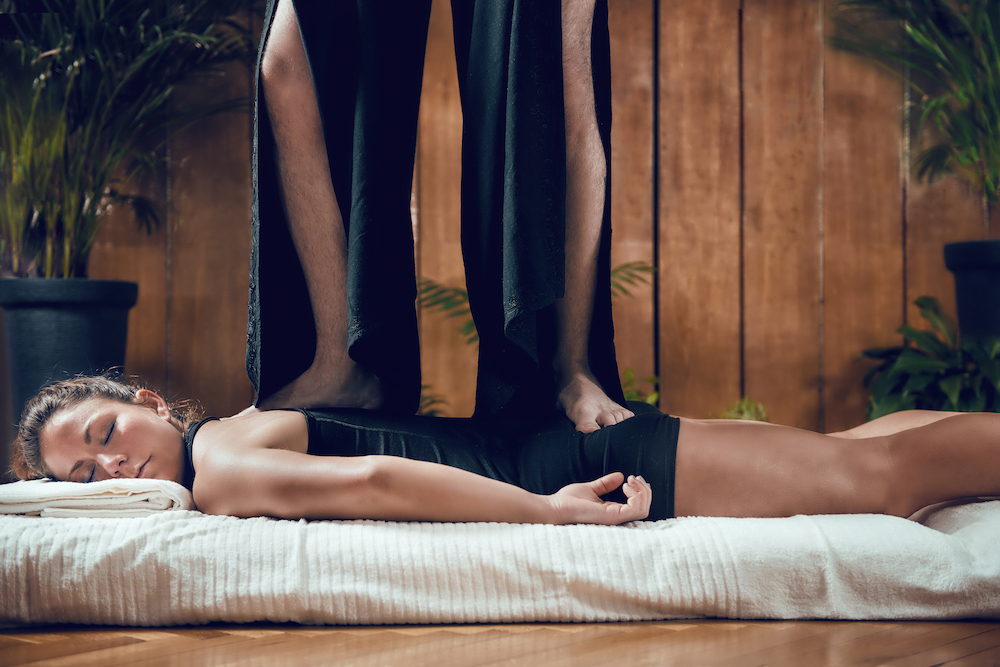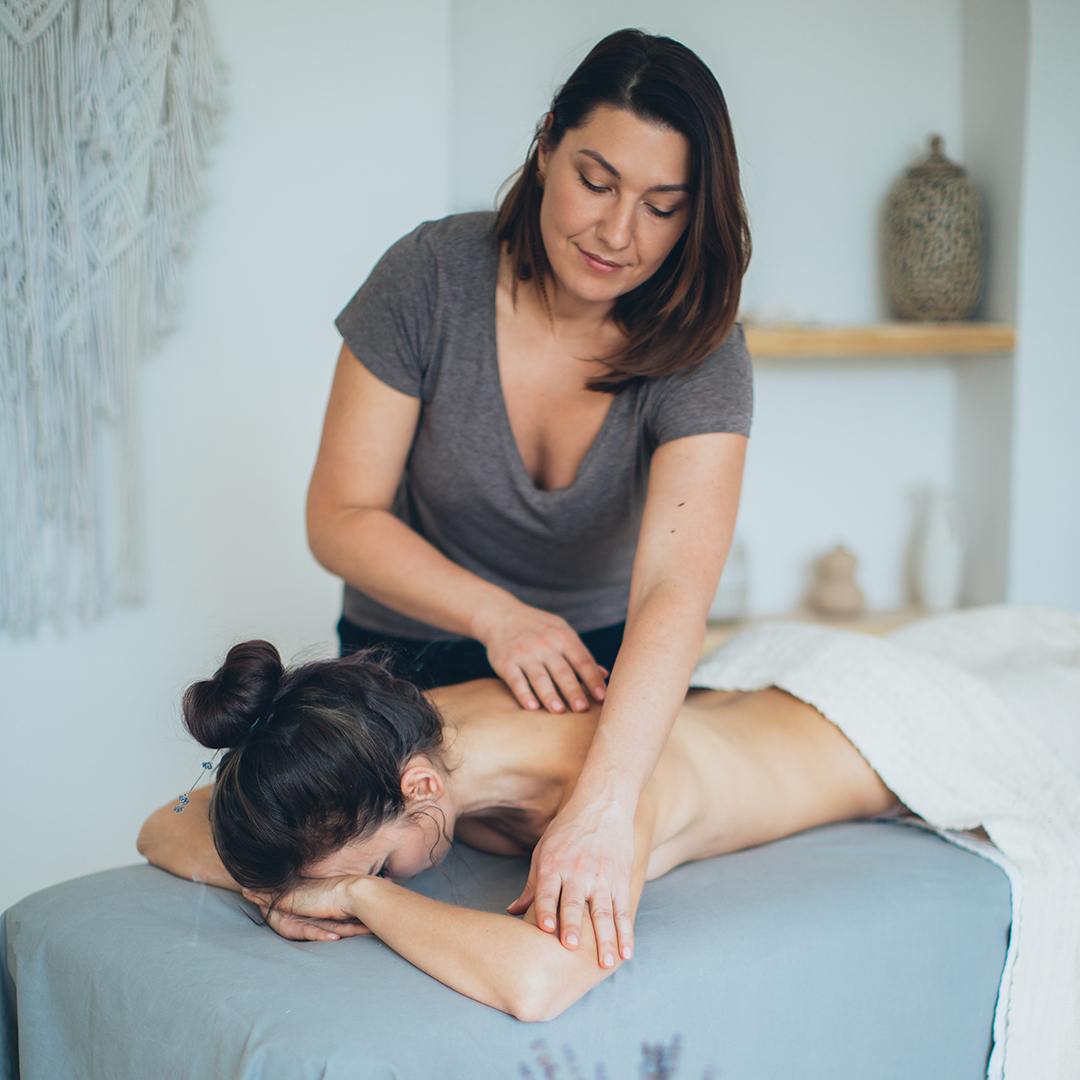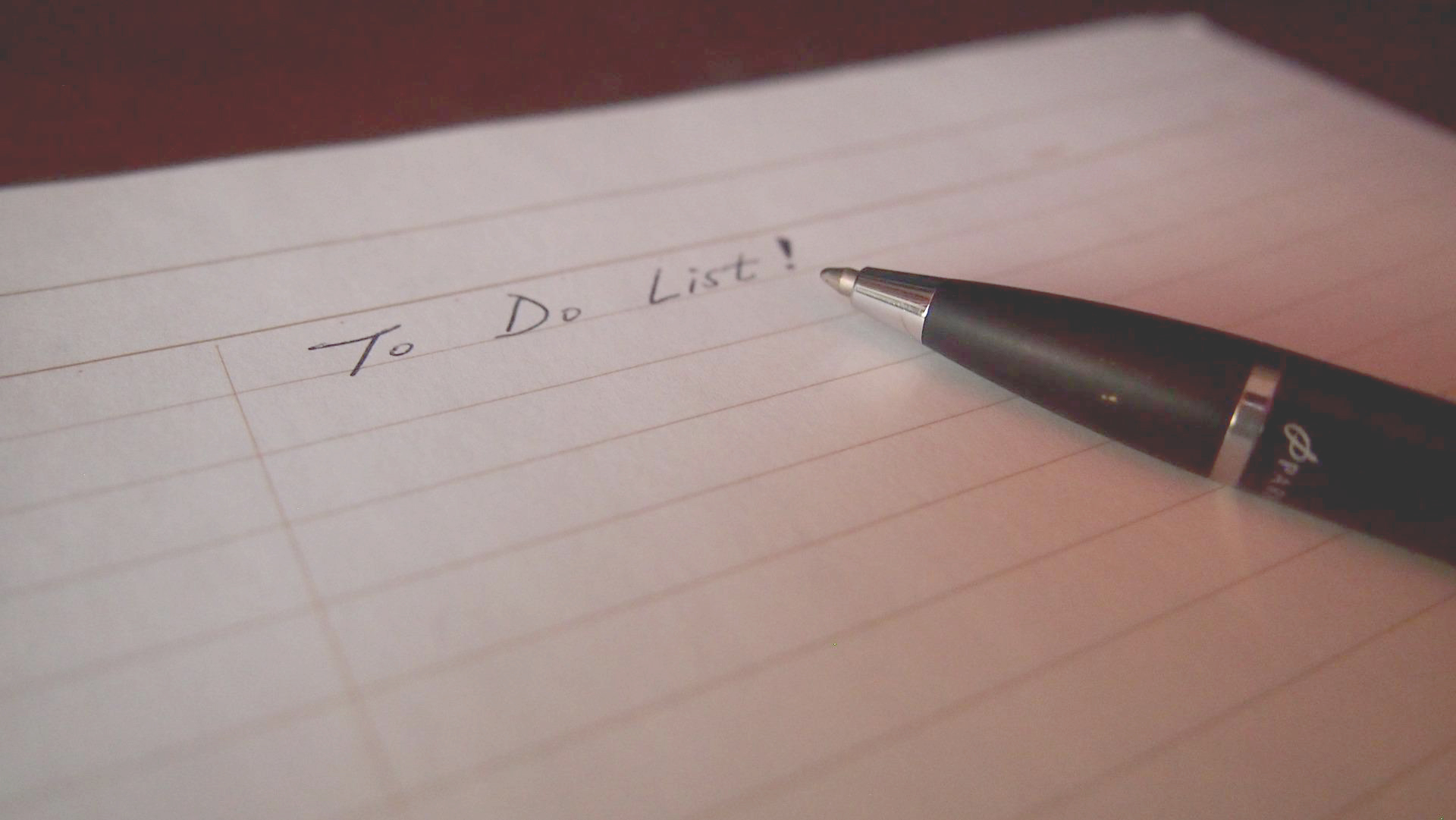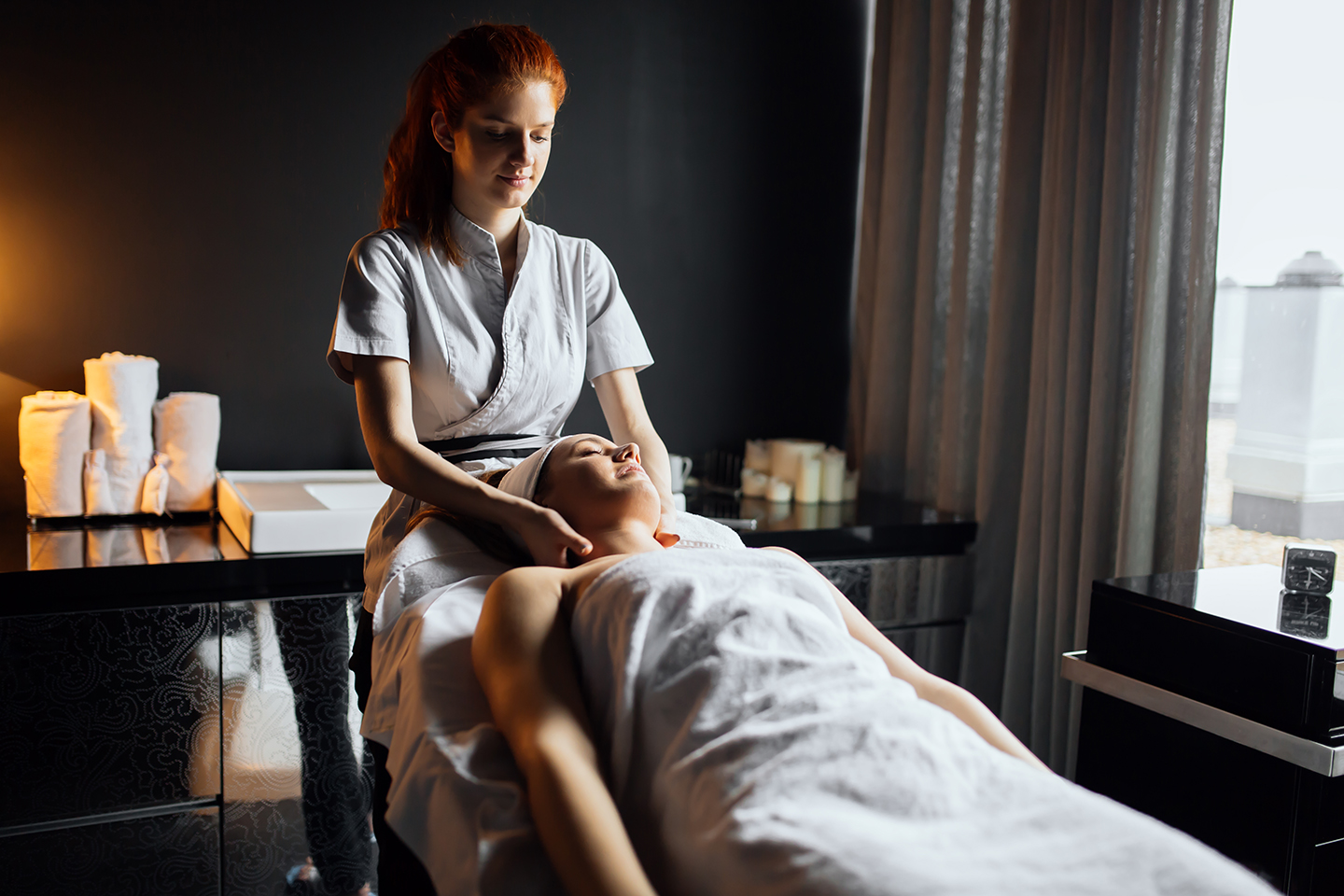What is Ashiatsu Barefoot Massage?
Literally, the word Ashiatsu translates to “foot pressure.” In this type of massage, therapists deliver strokes through their feet, rather than their hands. Traditionally, the therapist stands over the massage table, with parallel bars overhead for support. Using their feet as well as their body weight, the therapist delivers consistent, deep, broad pressure.
Benefits of Ashiatsu Barefoot Massage
—Deep pressure without pointy elbows or thumbs. The broad surface of the foot decreases the sharpness clients sometimes experience with deep tissue work.
—More power. As this type of massage utilizes the therapist’s body weight, it allows for up to three times deeper pressure than hands-on practices.
—Detoxification and Elongation are increased in Ashiatsu work, which emphasizes long, fluid strokes along the spine. (Remind your clients to compliment the detoxification process by drinking plenty of water before and after Ashiatsu sessions.)
—Improved posture and decreased pain. These outcomes are consistent across massage modalities. Some Ashiatsu clients report experiencing these benefits after as few as six sessions, delivered weekly.
This form of massage also delivers an important benefit for therapists: decreased wear and tear on the therapists’ hands. The use of the therapists’ body weight may allow for more efficient treatment. Ashiatsu is therefore an ideal option for therapists who are finding they must minimize hands-on work.
Contraindications for Ashiatsu Barefoot Massage
While this form of massage is safe for many different bodies, it’s not recommended for clients with the following conditions:
–Pregnancy or trying to conceive
–Recent surgeries or injuries
–Contagious skin disorders
–Compromised immune system
–Certain medications
–Advanced Diabetes
–Acute auto immune disorders
–Acute kidney or liver disorders
–Recent surgical implants
–High blood pressure
Setting up a Massage Space for Ashiatsu Barefoot Massage
While overhead bars are traditional for Ashiatsu Barefoot Massage, as this modality gains popularity some therapists are instead using hip-height bars, while the client lies on a pad on the floor. (This variation is sometimes called Ashiatsu Floor Therapy.) For those therapists who travel, Ashiatsu bars akin to short ballet bars are a good choice.
Learn Ashiatsu Massage Through our Massage School
Portland, OR massage therapists can add Ashiatsu to their toolbelt of massage modalities by taking an upcoming class with Nancy DeLong, LMT. Nancy is facilitating two upcoming workshops at our massage therapy school, on May 18th and July 13th. Looking for a taste of Ashiatsu without having to install parallel bars? This is the perfect way to get a taste while also earning 8 CE contact hours. Learn warm up strokes including effleurage, petrissage, and compression. The class will cover deep pressure techniques such as positional release, trigger point therapy, and cross fiber friction. Contraindications and effective client communication will also be examined.
Enjoy an early-bird discount by registering by March 20th (for the May 18th session) or May 15th (for the July 13t session). The 10% East West College alumni discount still applies after the early bird deadline.
Learn more about this and other upcoming continuing education workshops at our continuing education website.




